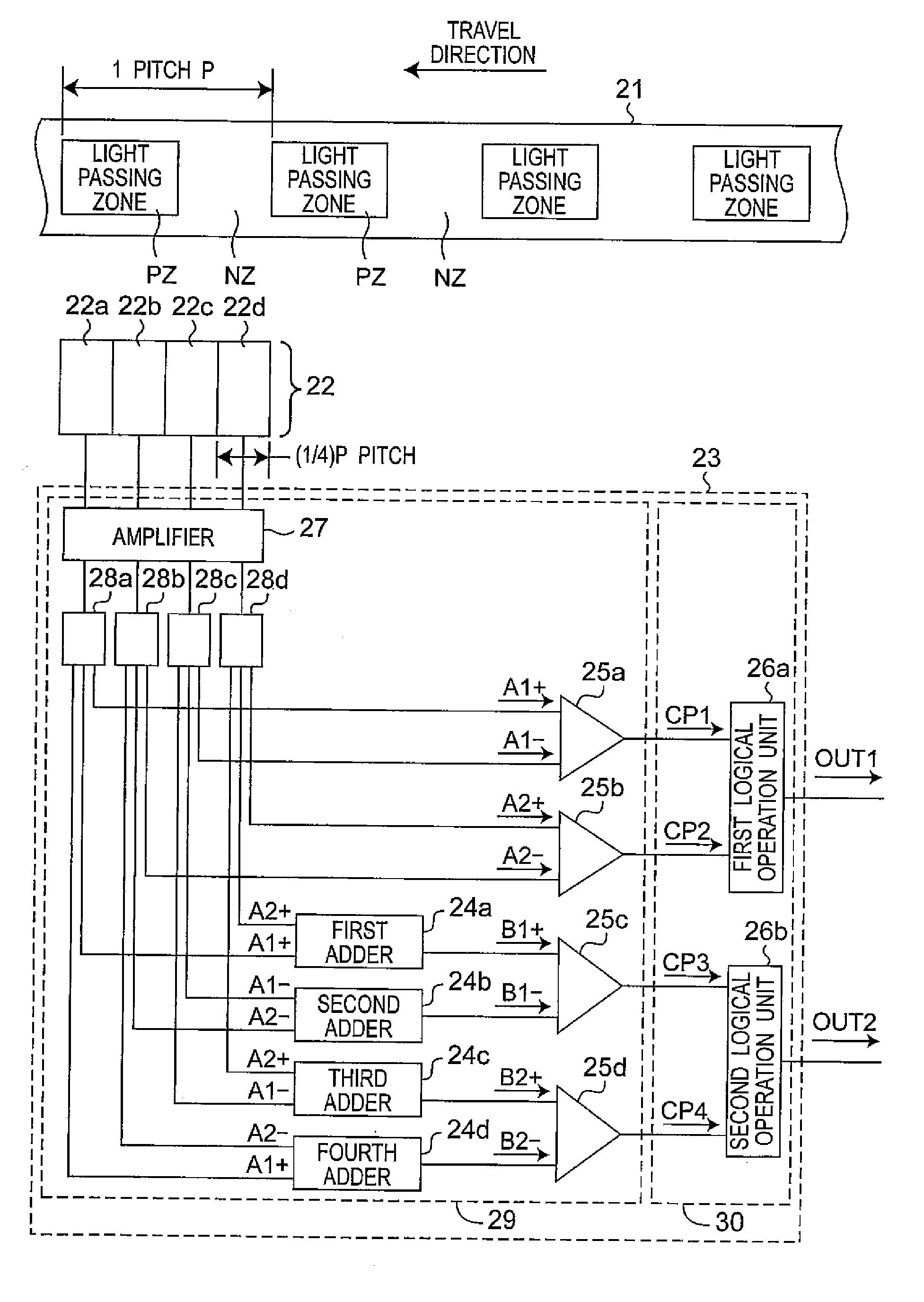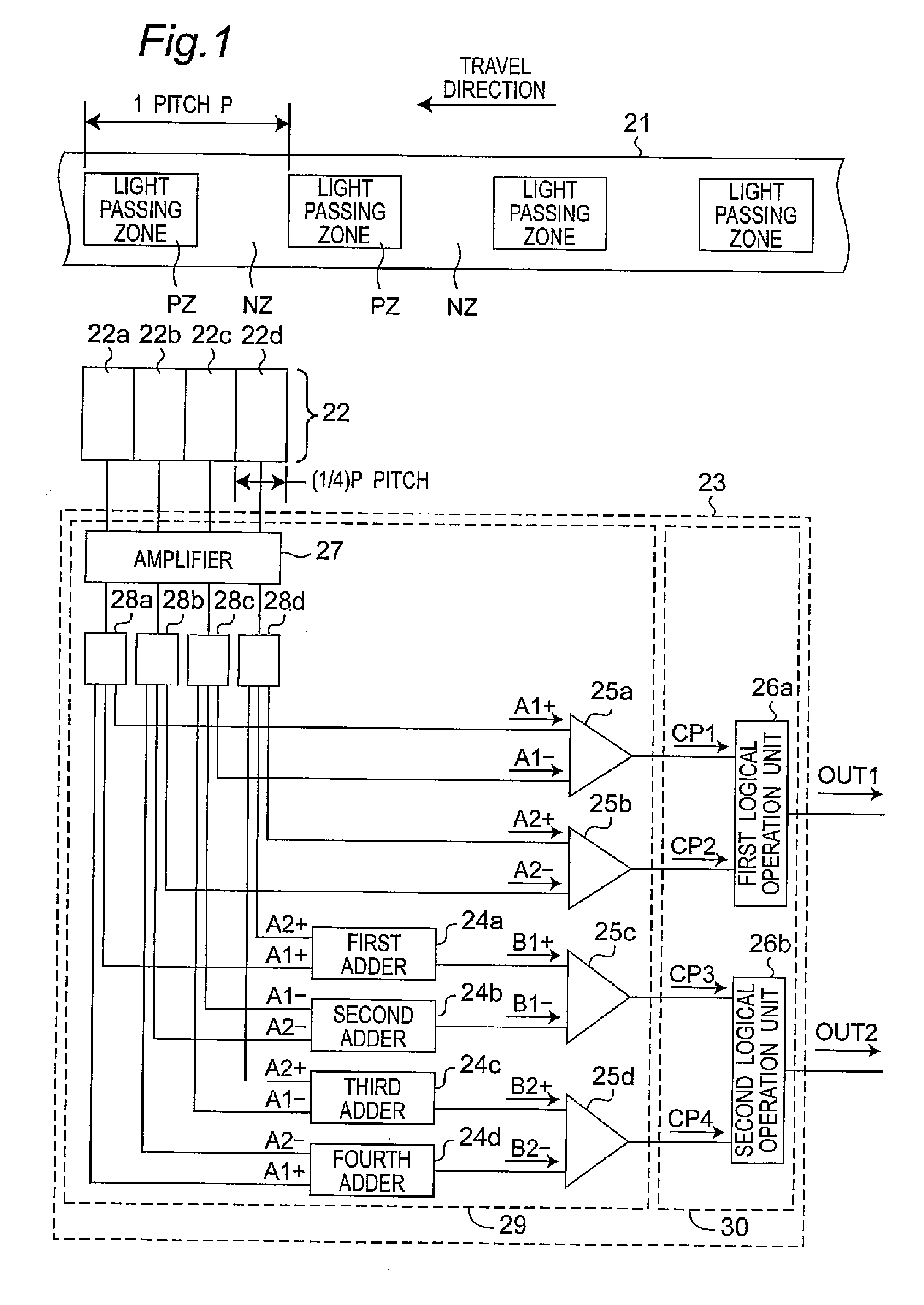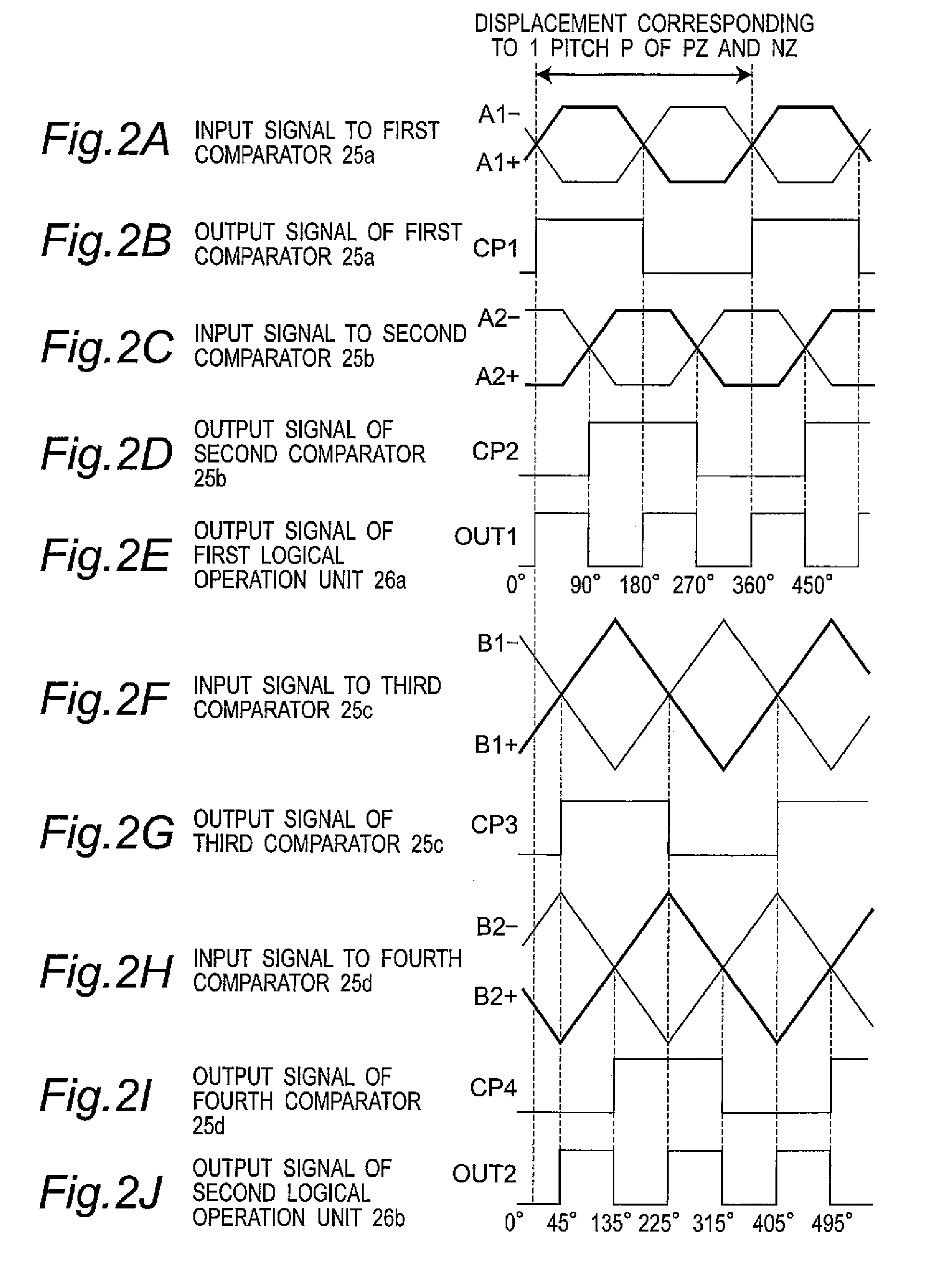Photoelectric encoder and electronic equipment using the same
a technology of photoelectric encoder and encoder, which is applied in the direction of code conversion, discharge tube/lamp details, instruments, etc., can solve the problems of considerable increase in cost, the conventionally impossible use of movable objects b>2/b> made of metal or synthetic resin for large-scale printers, and the limitation of their resolution, etc., to achieve the effect of increasing the total light-reception area, increasing the output strength of detection signals, and wide width
- Summary
- Abstract
- Description
- Claims
- Application Information
AI Technical Summary
Benefits of technology
Problems solved by technology
Method used
Image
Examples
first embodiment
[0057]FIG. 1 shows an outlined configuration of a photoelectric encoder according to this embodiment, including the placement relation between light passing zone PZ and light non-passing zone NZ of a movable object 21 and four light receiving elements 22a-22d constituting a light receiving section 22 and further including the configuration of a signal processing section 23 for calculating output signals of the individual light receiving elements 22a-22d.
[0058]As shown in FIG. 1, this optical encoder includes a light emitting section (not shown), a movable object 21 in which the light passing zone PZ and the light non-passing zone NZ are formed alternately at a constant pitch P along its travel direction, a light receiving section 22 composed of four (2n, where n=2) light receiving elements 22a-22d arrayed on a straight line without clearances at a pitch of (¼)P ((L / 2n)P, where L=1, n=2)) along the travel direction of the movable object 21, and a signal processing section 23 compose...
second embodiment
[0077]FIG. 3 shows an outlined configuration of a photoelectric encoder according to this embodiment. This photoelectric encoder is the same as the photoelectric encoder of the first embodiment shown in FIG. 1 except for a light receiving section 31, and therefore, the same reference numerals as in FIG. 1 are used and its detailed description is omitted. It is noted that this embodiment is intended to explain mostly the contents of claim 5.
[0078]The light receiving section 31 is composed of eight light receiving elements 31a-31h arrayed on a straight line without clearances along the travel direction of the movable object 2 at a pitch of (¼)P ((L / 2n)P, where L=1, n=2). That is, the light receiving section 31 has an arrangement that the light receiving section 22 of the photoelectric encoder of the first embodiment shown in FIG. 1 is arrayed two in number. In this case, the light receiving elements 31e-31h function in the utterly same manner as the light receiving elements 22a-22d (i...
third embodiment
[0079]FIG. 4 shows an outlined configuration of a photoelectric encoder of this embodiment. This photoelectric encoder has a configuration that other circuits are added to the signal processing section 23 of the photoelectric encoder of the first embodiment shown in FIG. 1.
[0080]In the signal processing section 23 of this photoelectric encoder, first, second correction amplifiers 41a, 41b are placed between the signal distributors 28a-28d and the first, second comparators 25a, 25b in the signal processing section 23 of the first embodiment shown in FIG. 1, and third, fourth correction amplifiers 41c, 41d (hereinafter, referred to generically as correction amplifiers 41) are placed between the adders 24a-24d and the third, fourth comparators 25c, 25d. Otherwise, the photoelectric encoder of this embodiment is the same as that of the first embodiment, and therefore the same component parts are designated by the same reference numerals as in FIG. 1 and their detailed description is omi...
PUM
 Login to View More
Login to View More Abstract
Description
Claims
Application Information
 Login to View More
Login to View More - R&D
- Intellectual Property
- Life Sciences
- Materials
- Tech Scout
- Unparalleled Data Quality
- Higher Quality Content
- 60% Fewer Hallucinations
Browse by: Latest US Patents, China's latest patents, Technical Efficacy Thesaurus, Application Domain, Technology Topic, Popular Technical Reports.
© 2025 PatSnap. All rights reserved.Legal|Privacy policy|Modern Slavery Act Transparency Statement|Sitemap|About US| Contact US: help@patsnap.com



